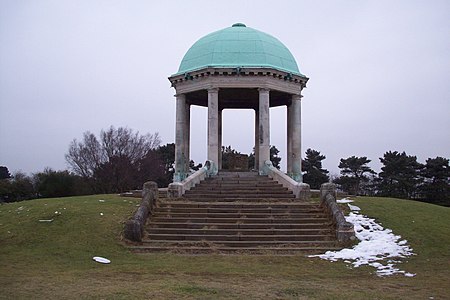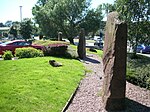Barr Beacon
Hills of the West Midlands (county)Walsall

Barr Beacon is a hill on the edge of Walsall, West Midlands, England, very near the border with Birmingham. It gives its name to nearby Great Barr (the Beacon borders the Pheasey area of Great Barr) and to the local secondary school Barr Beacon School. It is historically the site of a beacon where fires were lit in times of impending attack or on celebratory occasions. The site is on green belt land and is of local importance for nature conservation, as defined by Walsall Borough Council, who have designated some 60 acres (25 ha) of it as a Local Nature Reserve.
Excerpt from the Wikipedia article Barr Beacon (License: CC BY-SA 3.0, Authors, Images).Barr Beacon
Beacon Road,
Geographical coordinates (GPS) Address Nearby Places Show on map
Geographical coordinates (GPS)
| Latitude | Longitude |
|---|---|
| N 52.5736 ° | E -1.9107 ° |
Address
Barr Beacon War Memorial
Beacon Road
WS9 0QP
England, United Kingdom
Open on Google Maps





